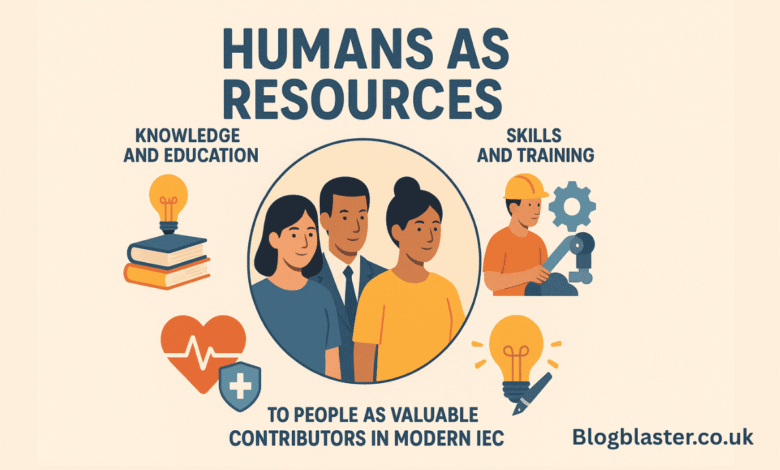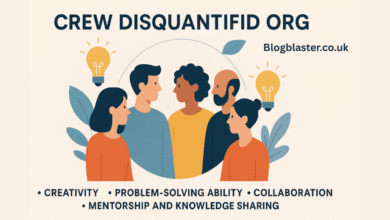Humans as Resources: Understanding the Value of People in Modern Economies

In today’s globalized, technology-driven world, human resources have become profoundly important. Far beyond being a simple label, it represents how individuals contribute to productivity, innovation, and growth. From a nation’s economic progress to an organization’s success, the idea of treating humans as resources focuses on the potential of people — their skills, education, health, creativity, and motivation — as assets that drive development and prosperity. This article explores what humans as resources means, how the concept evolved, why it’s critical to modern economies, and how societies and organizations can responsibly invest in people to unlock their full potential.
What Does Humans as Resources Mean?
The concept of humans as resources views people as valuable contributors — like land, capital, and machinery — but with a unique, dynamic ability to learn, adapt, and innovate.
In economics, it is closely related to the idea of human capital, which includes the knowledge, skills, abilities, and experience individuals bring to the production process. Unlike other resources, humans can continuously improve through education, training, and experience, making them renewable and evolving assets.
The phrase emphasizes that people are not merely numbers in a workforce but strategic resources that can determine an organization’s or a nation’s long-term success. This perspective has transformed traditional management practices, giving rise to what is now known as human resource management (HRM) and human capital development.
Historical Evolution of the Concept of Humans as Resources
The idea of humans as resources has roots in early economic theories. Adam Smith and Alfred Marshall, classical economists, emphasized the role of labor and education in wealth creation. However, it wasn’t until the mid-20th century that the term “human capital” became widely recognized.
Economists like Theodore Shultz and Gary Becker advanced the theory that investments in education, training, and health improve a worker’s productivity, just like investments in machines increase output. This perspective shifted the view of people from being mere laborers to valuable resources that generate long-term returns.
By the late 20th century, as industries evolved and technology began to dominate workplaces, organizations realized that the key to competitiveness lay not just in products or infrastructure but in their people. Thus, humans as resources became a central pillar of management and economic planning.
Key Elements of Humans as Resources
When we talk about humans as resources, we refer to the total capabilities of individuals that can be harnessed for productive use. These elements include:
Knowledge and Education
Education forms the foundation of human resource development. An educated workforce is better equipped to solve problems, innovate, and adapt to new technologies. Nations investing in education tend to have higher productivity and income levels.
Skills and Training
Skills—both technical and soft—are vital for transforming potential into performance. Vocational training, professional development, and lifelong learning ensure individuals remain valuable resources in changing economic conditions.
Health and Well-Being
Healthy individuals are more productive, energetic, and capable. Investments in healthcare, nutrition, and mental well-being are crucial to maintaining a strong, sustainable human resource base.
Creativity and Innovation
In the modern knowledge economy, creativity and innovation are premium resources. Humans possess the ability to think critically, design new solutions, and create breakthroughs — something no machine can fully replicate.
Experience and Attitude
Experience adds depth and judgment to human capital. Likewise, motivation, ethics, and positive attitude play essential roles in determining how effectively people use their skills and knowledge.
Importance of Viewing Humans as Resources
Recognizing humans as resources has numerous benefits for societies and organizations alike.
Economic Development
Countries that treat their population as resources rather than burdens tend to progress faster. By investing in education, healthcare, and skill development, they turn potential into productivity. Examples include nations like Japan, South Korea, and Singapore, which transformed limited natural resources into economic powerhouses through human resource development.
Organizational Growth and Competitiveness
For companies, employees are the backbone of innovation and performance. Strategic human resource management — recruiting the right people, nurturing talent, and creating a healthy work culture — directly influences profitability and sustainability.
Social Transformation
Empowering people through education and skill development leads to broader social benefits, such as poverty reduction, gender equality, and civic participation. Viewing people as resources helps societies evolve toward inclusiveness and empowerment.
How to Develop Humans as Resources
To transform the population into productive human resources, deliberate investment and policy measures are needed. Here’s how individuals, organizations, and governments can effectively develop human potential.
Education and Skill Development
Formal education lays the groundwork for intellectual growth. However, continuous learning through technical and vocational training ensures adaptability in dynamic labor markets. Governments must promote accessible, high-quality education, while organizations should invest in employee development programs.
Health and Safety Programs
Physical and mental well-being are essential for sustainable productivity. Societies that provide affordable healthcare and safe working conditions cultivate healthier human resources who can contribute longer and more effectively.
Employment and Equal Opportunity
Creating job opportunities ensures that human resources are utilized efficiently. Fair pay, inclusivity, and gender equality also enhance morale and retention, leading to a more committed workforce.
Technological and Digital Literacy
In the digital era, technology skills are non-negotiable. Technologically literate people can adapt to automation, digital transformation, and AI-driven changes in the workplace.
Innovation and Research Support
Encouraging research, creativity, and innovation helps nations move up the value chain. Institutions that fund innovation harness human intellectual power to drive future industries.
Ethical Dimensions of Treating Humans as Resources
While the concept of humans as resources highlights the value of people, it must be balanced with ethical considerations. Critics argue that calling people “resources” risks objectifying them, reducing them to economic units rather than acknowledging their dignity and humanity.
To address this concern, modern HR and economic frameworks emphasize human-centered development. This means treating people as partners and co-creators of value, not as expendable assets. Ethical human resource management focuses on fairness, respect, well-being, and empowerment, ensuring that people’s rights are protected while fostering productivity.
The Role of Technology and AI in Shaping Humans as Resources
With artificial intelligence and automation changing the nature of work, the definition of humans as resources is evolving. Machines now handle repetitive and data-driven tasks, while humans are valued for creativity, emotional intelligence, and problem-solving.
This shift calls for rethinking how we train and deploy human resources. Lifelong learning, digital upskilling, and interdisciplinary knowledge will define the future of human capital. Rather than competing with machines, humans must learn to complement technology — becoming innovators and decision-makers in an increasingly automated world.
Examples of Nations Investing in Humans as Resources
Singapore
Singapore transformed from a small trading port into a global economic hub by investing heavily in education, healthcare, and skills training. The government’s commitment to developing its people turned limited natural resources into immense human capital.
Japan
After World War II, Japan focused on industrial education and discipline to rebuild its economy. The Japanese emphasis on teamwork, skill mastery, and continuous improvement (Kaizen) demonstrates how human resources can drive national resilience.
Finland
Finland’s success in innovation and education stems from its long-term vision of treating citizens as strategic resources. Its education system prioritizes creativity, equity, and holistic development — key aspects of high-quality human resources.
Challenges in Managing Humans as Resources
Despite its advantages, effectively managing humans as resources comes with challenges:
- Skill gaps between education systems and industry needs
- The migration of skilled laborers has resulted in brain drain
- Technological unemployment caused by automation
- Burnout and mental health crises in overworked environments
- Ethical concerns about surveillance, exploitation, and inequality
To overcome these issues, countries and companies must adopt sustainable human resource policies that balance productivity and well-being.
The Future of Humans as Resources
The future of humans as resources lies in continuous transformation. The 21st-century economy demands agility, creativity, and ethical awareness. Artificial intelligence, globalization, and environmental challenges are reshaping work and education systems.
Tomorrow’s workforce will not only need technical skills but also emotional intelligence, adaptability, and cultural literacy. Governments and organizations must invest in upskilling programs, promote mental health, and foster inclusive environments where everyone can thrive as valuable human resources.
Conclusion: Investing in Humans as Resources for a Better Future
In conclusion, the concept of humans as resources underscores a simple yet powerful truth: people are the most valuable asset any organization or nation can have. When equipped with education, health, and opportunities, individuals become catalysts for innovation and growth.



